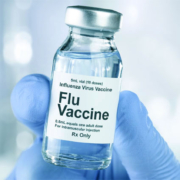What’s Herd Immunity?
Herd immunity is a way to protect a population against the transmission of an infectious disease from one person to another by increasing the number of people who are immune to the disease. This results in lower transmission of the disease and thus protects more people or “the herd”; herd immunity is the only way to protect people who can’t get the flu shot, such as the very young, the elderly, pregant women, and people with compromised immune systems.
There’s a lot written on the net about herd immunity, and most of it’s confusing or plain misleading, especially when it comes to vaccinations. I’m going to break it down to natural herd immunity and vaccination herd immunity. Today, I’ll define both terms.
Natural herd immunity develops as many people become infected, get sick, and generate antibodies to the virus or other pathogen. When a large number of people get infected and generate an immunity to the virus, those people can no longer catch that virus; thus they won’t be transmitting it, and that protects the rest of the herd. A side benefit is that it will also provide some immunity to similar viruses.
Vaccination herd immunity uses vaccines to help people become immune to a disease without getting sick. When enough people become vaccinated, the herd immunity goes into effect: those people can no longer catch that virus; thus they won’t be transmitting it, and that protects the rest of the herd.
In both cases, the issue is getting enough people to be immune to the disease. Estimates vary but the target is somewhere between 80% and 94%. The question is simple: do we want 80–94% of the population getting sick or do we want vaccinations? More on this question on Saturday.
What are you prepared to do today?
Dr. Chet
Further Reading:
1. http://www.pbs.org/wgbh/nova/body/herd-immunity.html
2. https://vector.childrenshospital.org/2017/03/social-media-mumps-herd-immunity/









